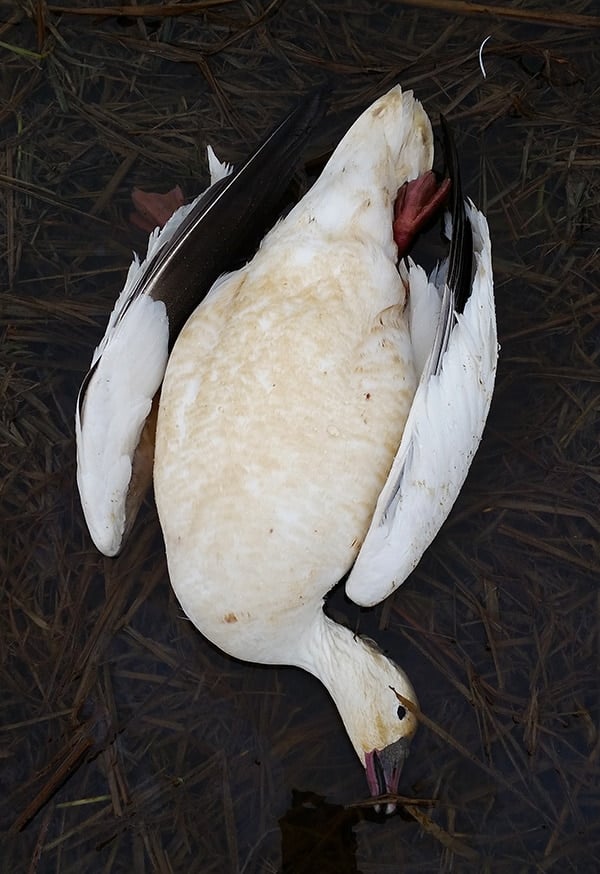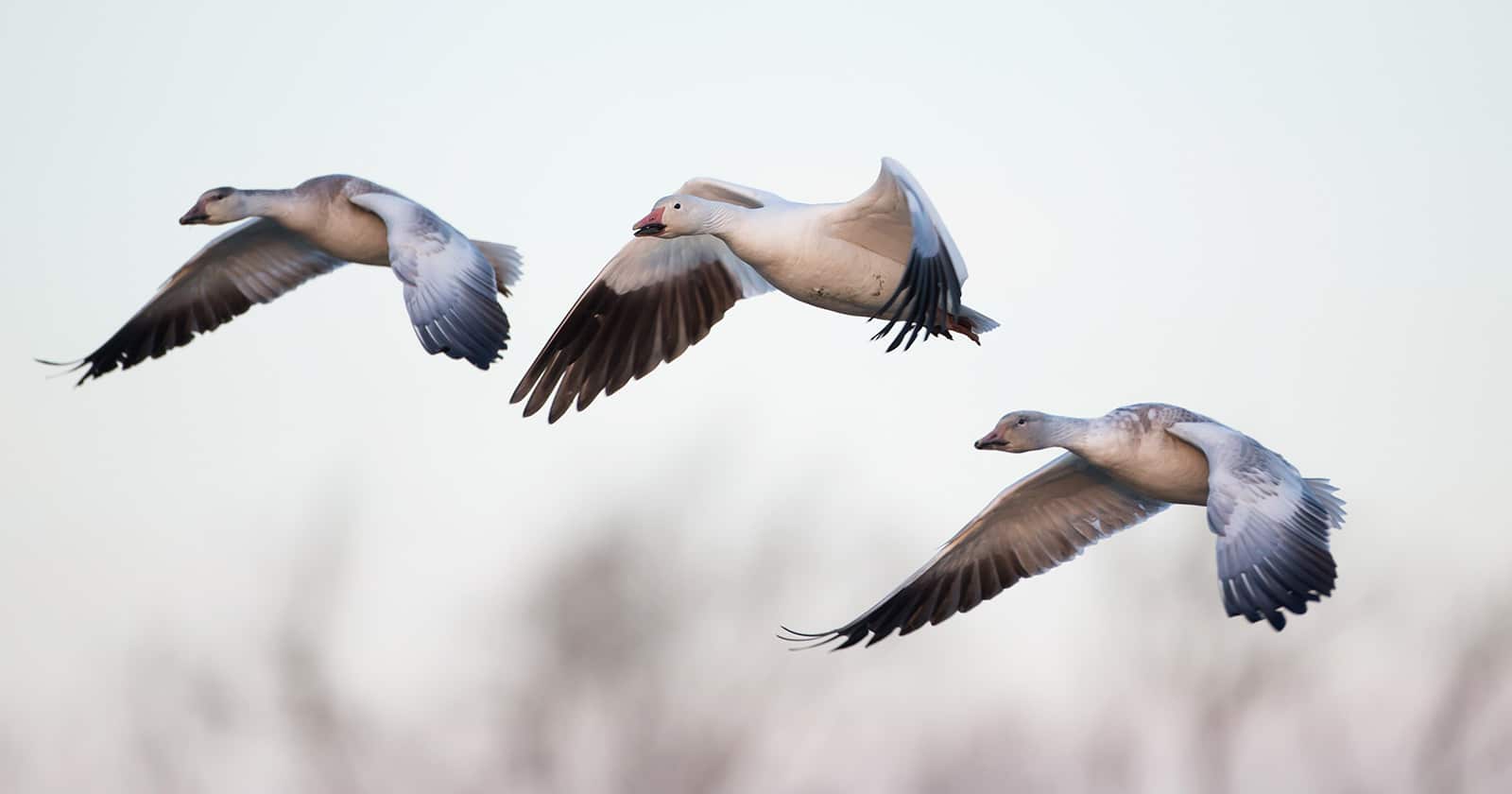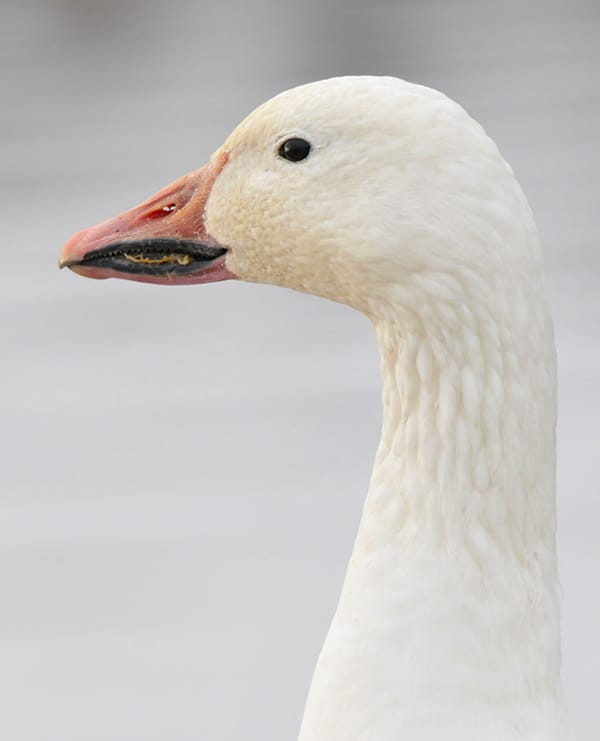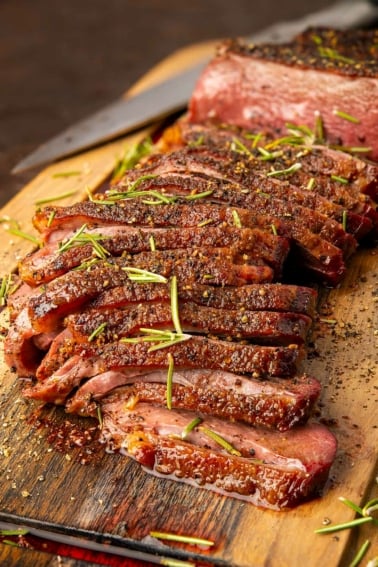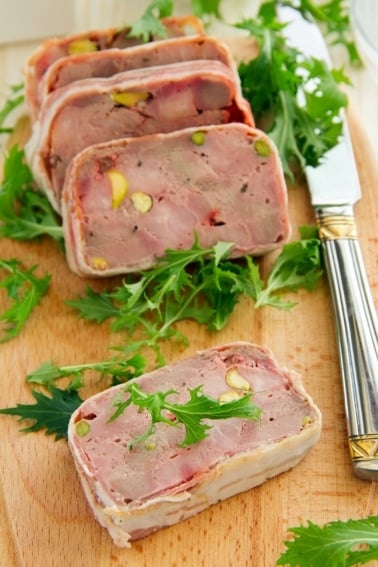As an Amazon Associate I earn from qualifying purchases.
Nowhere is the maxim “familiarity breeds contempt” more apt than in the relationship between North American hunters and the snow goose.
Sky carp. Trash birds. Whack ’em, stack ’em… and maybe eat them. Sad.
I am here to rehabilitate the much maligned snow goose (and its little comrade the Ross’ goose), at least from a cook’s perspective. Both can be excellent eating — in some cases even better than the fabled whitefront goose. And no, I am not joking. Let me explain.
When it comes to birds, humans generally prefer species that eat plants, not animals. In the case of waterfowl, this is obvious: Eat a plucked, roasted scoter and then eat a plucked, roasted wood duck and you tell me which you like better.
Well, snow geese fit the bill. “Goslings will snap at mosquitoes, but they’re pretty well vegetarian,” said Ray Alisauskas, an expert on snow geese and a biology professor at the University of Saskatchewan. “There’s basically no animal matter in them.”
Speaking of bills, that crazy beak of theirs, with the permanent grin? It is specially designed to dig in the muck for tubers, rhizomes and roots. Not bugs, clams or crawdads.
A survey of nearly a dozen scientific papers on the diets of snow geese backs Alisauskas up. Here’s what snows and Ross’ do eat:
- Sagittaria tubers, which are also known as arrowhead or duck potato. They are fantastic, by the way! (I wrote about eating them here.)
- The tubers of bulrush, cattail, saltgrass and spartina (a marsh grass).
- Cotton grass and northern scouring rush.
- Ryegrass, and the new green growth of wheat and other winter shoots.
- Grain. Lots of grain. Most notably rice, including wild rice, dry peas, lentils, barley, wheat, and, whenever they can get it, corn.
“Corn is king,” Alisauskas said. He says that grain is one key to a successful migration, as it is very nutrient dense and can easily be converted into fat.
Everything listed here translates into a tasty bird, and one with lighter, milder meat than many more coveted ducks.
So what’s going on here? Why aren’t snow geese treated with the respect their specklebellied cousins get?
Well, as it happens, regular waterfowl season, i.e., winter, is when snows and Ross’ geese are at their leanest — at least in much of their range. In most wintering grounds, the geese lose their fat, in part because they don’t need it in warmer weather. They spend their days eating green things. It’s like a spa vacation for them.
There are exceptions. Larry Robinson of Coastal Wings Outfitters, who spends about a third of his year chasing snow geese, says that wintering snow geese in Arkansas are reasonably fat; they stay that way by eating unharvested rice.
But in most cases, snows in winter are so lean their skin looks blue, and they become very hard to pluck, which is another deterrent. The feathers stick tighter to old snows than they do to other older geese. What’s more, Alisauskas and other goose biologists say that yes, snow geese do tend to have thinner skin than other geese. But it’s never as thin as, say, a pheasant. Still easy to pluck if the goose is well upholstered.
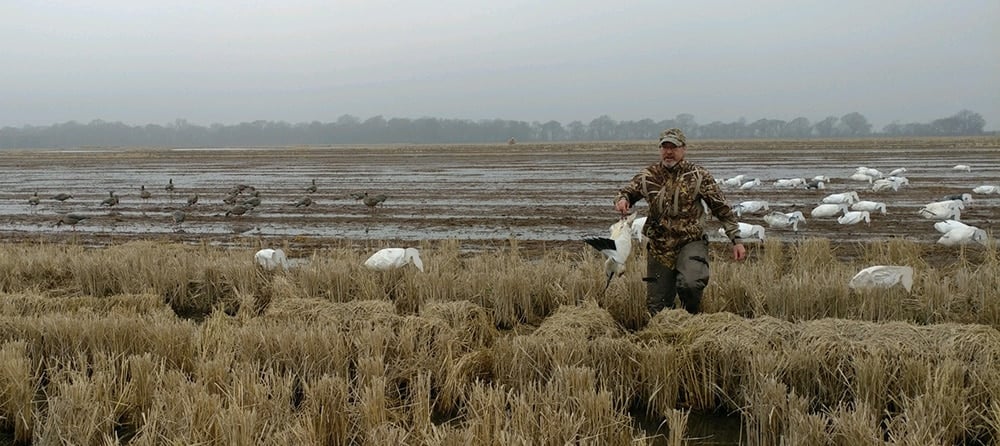
And some geese will still be lush, even in winter. Individual variation happens, and, as I just mentioned, the Arksanas snows seem to stay fatter in general.
So keep an eye out for these geese early in the regular season. Easiest way to tell is to feel the keelbone: If it’s prominent under the feathers, a thing we call “hatchet breast,” skin the bird. But if the keel feels padded, the bird is fat.
You can also pluck a portion of the breast. Blue skin? Skinny bird. Skin it. Pink skin? Fatty bird. Pluck it. This is a fat one from NorCal:

The real time to get top-quality snow geese is in migration.
Want morbidly obese, sweet snow geese? Hunt where Alisausakas lives, in Saskatchewan. Or really anywhere in Canada in September and early October.
Snow geese stage in mass numbers several places en route to their destination. One stop on their way south are the barley, dry pea and lentil fields of the Canadian prairie. There they fatten up for their flight to the United States. I have seen pictures of snow geese so fat it’s hard to believe they can fly. Alisauskas says he’s seen birds with whole servings of lentils or peas in their crop; I’ve seen this with rice in November here in California.
You can also get primo snow geese on the flip side, in the spring.
With the geese on their way up north, they stop all throughout their range to top up their tanks on whatever grain they can scrounge. Corn, especially. Waste corn recently made available by melting snow is ideal. Robinson says watch for years when the geese are migrating more slowly if you want fat birds.
Ironically, spring is when snow geese are most abused. Truckloads tossed in the back of a pickup, where 99% are breasted out with no skin.
The only real reason for this is abundance. “Rarity is valued,” Alisauskas said.
It’s true. If snow geese were a relatively uncommon “trophy” the way say, a canvasback is (we can only shoot one or two per day), more hunters might pause before simply breasting out the bird. Or at least I’d like to think so.
I get it. If I shot 100 snow geese in a day, or hell, even 15, I would probably not pluck them all. It’s a ton of work, and the reality is that yes, snows are superabundant, a pest even. A tasty pest, but one nonetheless.
All I ask of you is to do the “breast test” and consider picking a few of your more well padded snow geese. You’ll find that they are every bit as good as a specklebelly. Mild, with sweet fat, and plenty big enough to make it worth your effort.
Give it a go and see if you don’t agree.
